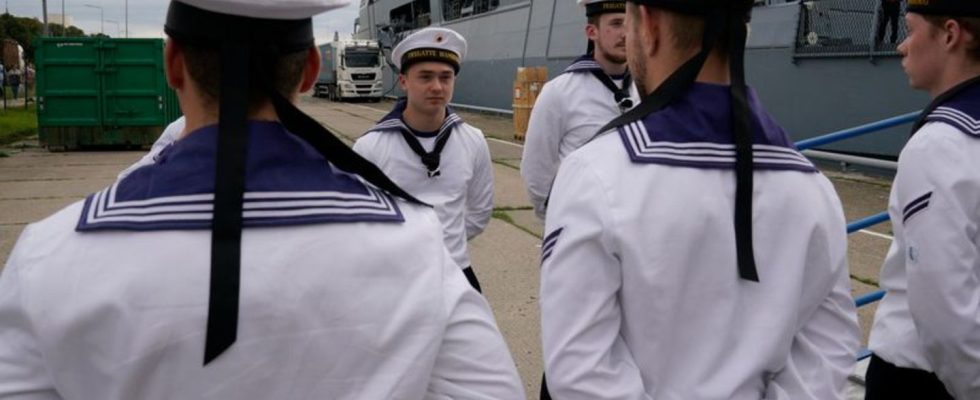Military
German naval leadership during major Baltic Sea maneuvers
Crew members of the German frigate “Hamburg” in Riga. photo
© Roman Koksarov/dpa
“Northern Coasts” maneuver: Under German leadership, allied naval forces are practicing off the coast of the Baltics. This is about alliance defense – a signal also to Russia.
High-ranking visit to the major Baltic Sea maneuver “Northern Coasts” in Latvia led by the Bundeswehr: The deputy inspector of the German Navy, Vice Admiral Frank Lenski, and other high-ranking people have announced their visit this Monday Military officers from allied partners and a member of the Defense Committee in the Bundestag.
In the exercise, which started on September 9th and runs until September 23rd, more than 3,000 soldiers from 14 countries, around 30 ships and boats and around 20 aircraft are training off the coast of the Baltics.
The training area is not far from the Russian Baltic Sea exclave of Kaliningrad. Russia has stationed its Baltic fleet there. Lenski and the other visitors want to board the US military ship “USS Mesa Verde”. The exercise in the coastal waters and the land and airspace of Estonia and Latvia is led by a command staff in Rostock around 1,000 kilometers away.
Training objective: alliance defense
“Northern Coasts” has been taking place annually since 2007 on the initiative of the German Navy. But for the first time, an alliance defense scenario is now being used as a basis in view of the confrontation with Russia and its war of aggression in Ukraine. For example, training on NATO’s eastern flank is to be carried out to keep the sea routes of the Baltic states clear in an emergency. To do this, the participating units must prove themselves in simulated combat situations.
“The Baltic Sea is the lifeline for all neighboring states, and an interruption to trade would have fatal consequences,” said Flotilla Admiral Stephan Haisch before the start of the sea maneuvers in Riga. The German trainer emphasized that there are only four access routes to get to the Baltic Sea – one of the busiest sea areas in the world – by ship: “Very easy to control, but on the other hand also very easy to block.”
Various training scenarios on the open sea
The fleet of around 30 ships and boats – including six frigates and destroyers, four corvettes and patrol ships as well as a submarine – had gathered in the port of Riga and off the coast before leaving. There are also 19 aircraft and helicopters, including maritime patrol aircraft and transport aircraft. Training takes place on the open sea, for example mine clearing, sea target shooting and submarine hunting. Protecting ports and landing troops on land are also on the agenda.
No disruptions or provocations expected
Before the start of the large-scale maneuver, exercise leader Haisch did not expect any disruptions or provocations from the Russian Navy. It is “normal” for Russia and NATO to observe each other’s exercises. And if you get too close at sea, there are ways to communicate. “I don’t expect any problems there either.”
In addition to those bordering the Baltic Sea, Italy, France, Canada and the USA are also taking part in the exercise. The Latvian Navy chief Maris Polencs pointed out that cooperation between the Baltic states and the regional naval forces must be intensified. The ongoing war in Ukraine has shown this.

